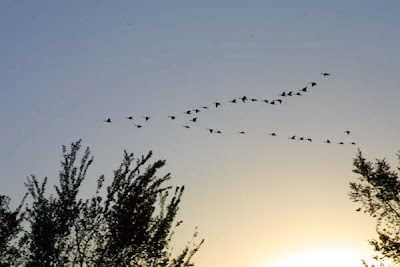Cold Weather Camping
If done correctly, and if your prepared for it, cold weather camping can be even more enjoyable than during temperatures above 40 degrees.
The key to being comfortable in cold weather is to keep dry. The moment that you become wet, the day can turn from fun and enjoyable to a death trap.
It all starts with the feet. In all my experience camping, I have learned one thing for sure. A person with un-happy feet is an unhappy person. Keeping your feet is simple; all you have to do is follow a few rules that apply when camping in cold weather.
The first rule is to keep them dry. A few simple steps will keep your feet dry through even the coldest and or wettest conditions that you may come across. The first step is layering, though it may seem odd, layering clothing on your feet is one of the key components to keeping them dry, warm and comfortable. However it turns out to make more sense than you may have realized. Start with a thin pair of socks, I use silk socks. These will wick any sweat away from your feet that may accrue while you are walking around and working. Second will be your normal tennis shoe socks. These will further pull any wicked sweat away from your foot. The third layer is your heavy duty sock that will provide you with ultimate warmth. If you are worried about water coming in through your boot I would advise taking a plastic bag and placing it between your tennis shoe sock (you may need to find a higher sock) and your thick sock. The plastic bag will limit the breathability of your foot; however it will keep your feet dry from the outside. This means that more attention will have to be paid to whether or not your feet are sweating.
Layering the rest of your clothes is one of the more commonly known aspects of cold weather camping, or just plain old being in the cold weather. However, some people may be layering incorrectly. When layering the first think you need to think about is “what will bring moisture off of my skin”. I find that the cold gear line that under armor makes does the job very well. If you do not currently own any, it is not a problem, there is just a little more planning that needs to go into getting dressed. First I would advise wearing any tight fitting under shirt. Something breathable that will wick sweat away from your skin, not hold it in. Many times people will come down with and or die of hypothermia not because they got wet from an outside source, but because their own sweat killed them. If left unchecked your sweat will cook on your skin and sap the energy and life right out of you. Now that an undershirt is on, the long sleeve shirts come into play. One is usually enough however, if you are one that gets cold easily, it is ok to put two on. After the shirts are on, it is time to begin putting on the clothing that will take the brunt of the cold. I like to put a hooded sweatshirt on and then a fleece. This allows me to access to the zipper of the fleece ion the event that I need to cool off to prevent sweating. Having a hooded sweatshirt will provide you with the option of having another hood, or, the hood rolled up under your coat will protect the back of your neck from the cold. If it is going to be super cold and windy where you plan to camp it would be wise to now put a light weight jacket over the fleece. It will lessen the bite of the wind, keeping it out of the lower layers of your clothing, as well as act as another barrier between you and water. Now you are ready for your outer shell, this can be any rugged jacket that is preferably waterproof. Since this is your outer layer, something that is highly visible is greatly advised. I personally own a Vertex jacket that is made by Columbia. It is bright orange and grey. Though the color will not keep you warm, it may just save your life if your body shuts down in the cold. It will allow rescuers to see you much easier in a wintery expanse of white and black.
(To be continued with layering your bottom half)














 External Above
External Above